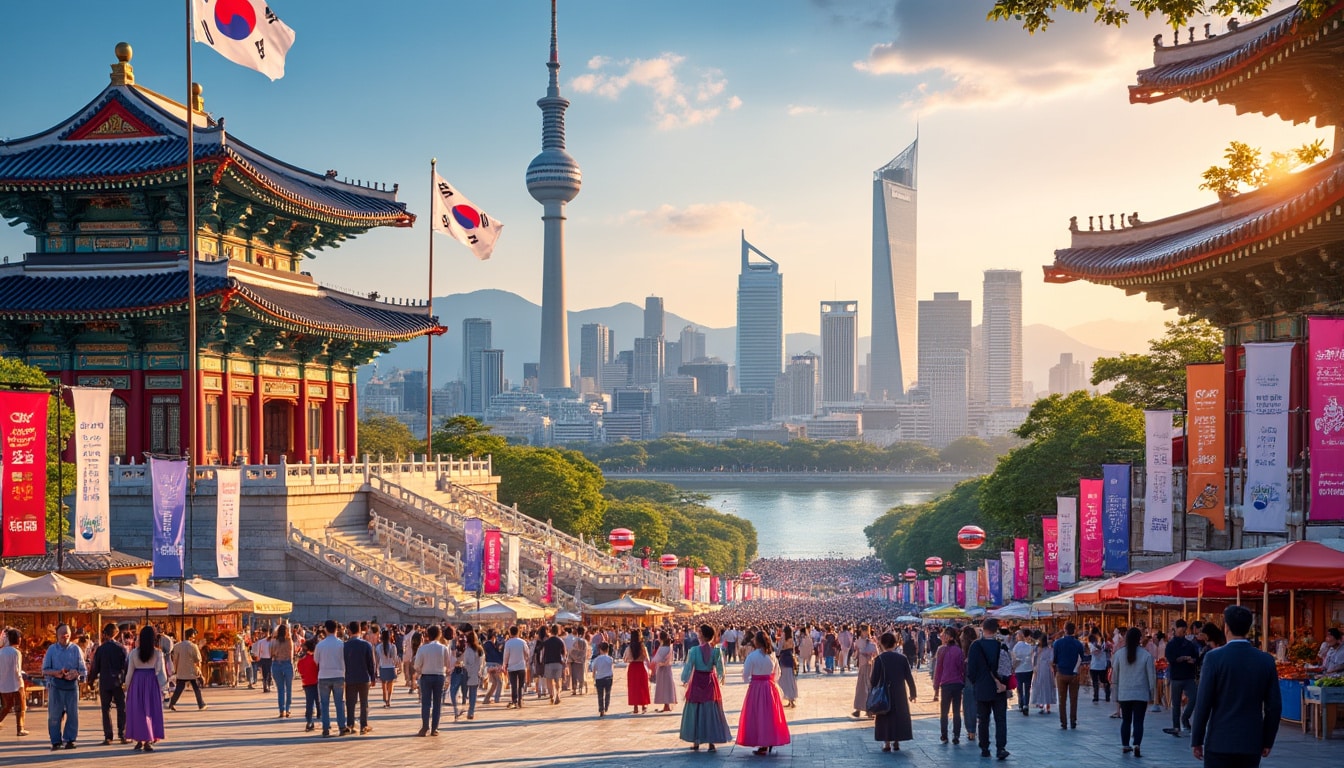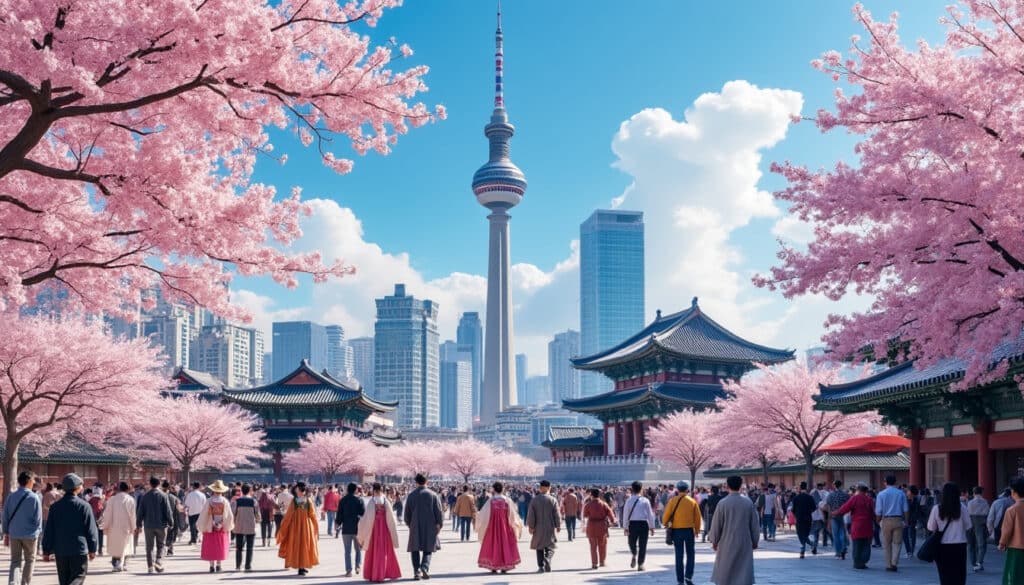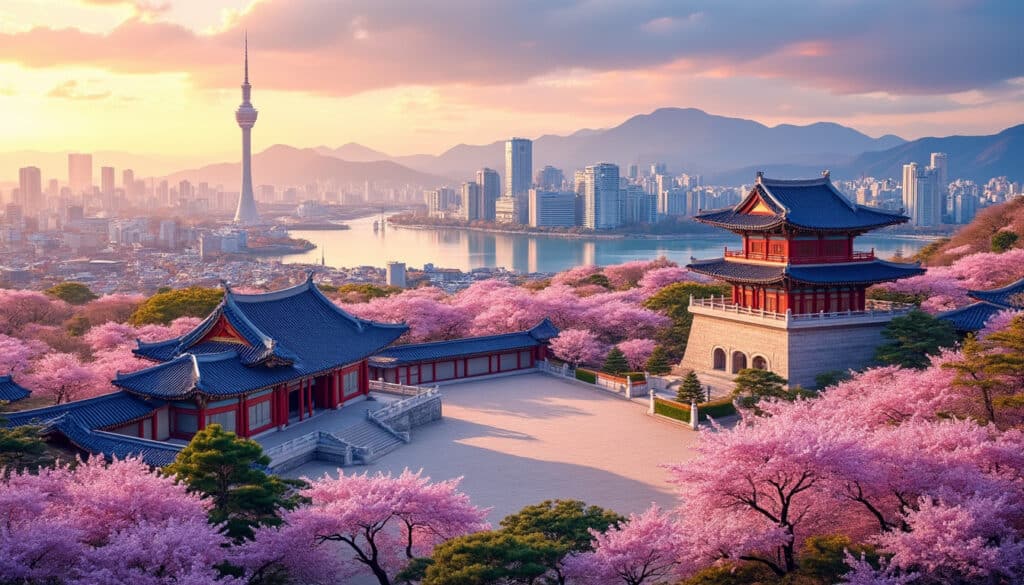Seoul, a dazzling city that serves as the heart of South Korea, has more to offer than its bustling streets, futuristic skyscrapers, and vibrant culture. Its essence is interwoven with the intriguing tapestry of its names, symbols, and identity. The significance of Seoul’s identity is multifaceted, reflected through its historical names and the symbolic emblem of the city. Delving into the significance of these elements helps us appreciate the dynamic evolution and rich heritage of this modern metropolis.
The Evolution of Seoul’s Names: A Historical Journey
The captivating story of Seoul’s names begins long before the city blossomed into the capital of South Korea. Initially known as Wiryeseong during the Baekje Kingdom, the city served as an early settlement in Korea’s complex history. Later, the Joseon dynasty bestowed upon it the name Hanseong, meaning “Han Capital,” signifying its central position along the Han River.
The name Hanyang, another moniker used interchangeably with Hanseong, translates to “The Sunny Side of Han,” offering a more poetic interpretation. These names highlight the strategic and cultural significance of the city during the Joseon dynasty, when Seoul was already emerging as a vital political and cultural hub on the Korean peninsula.
However, the advent of Japanese colonial rule in 1910 brought a new name—Gyeongseong. This name marked a period of transformation under Japanese influence, with Seoul often referred to as Keijo in formal Japanese documentation. Despite the imposition of this colonial name, Koreans continued to use variations of traditional names, demonstrating resilience in preserving their cultural identity.
The culmination of Seoul’s name evolution came post-liberation from Japanese rule when the city embraced the name Seoul—an indigenous Korean term meaning “capital” or “metropolis.” This change symbolized a newfound independence and restored a sense of national identity, underscoring Seoul’s rebirth as the central node of a modern, energized South Korea.
Today, the name Seoul stands as an embodiment of the city’s journey from ancient times to its contemporary identity. As a metropolis, Seoul continually charts its path forward, carrying with it the cultural richness and diversity that its historical names evoke.
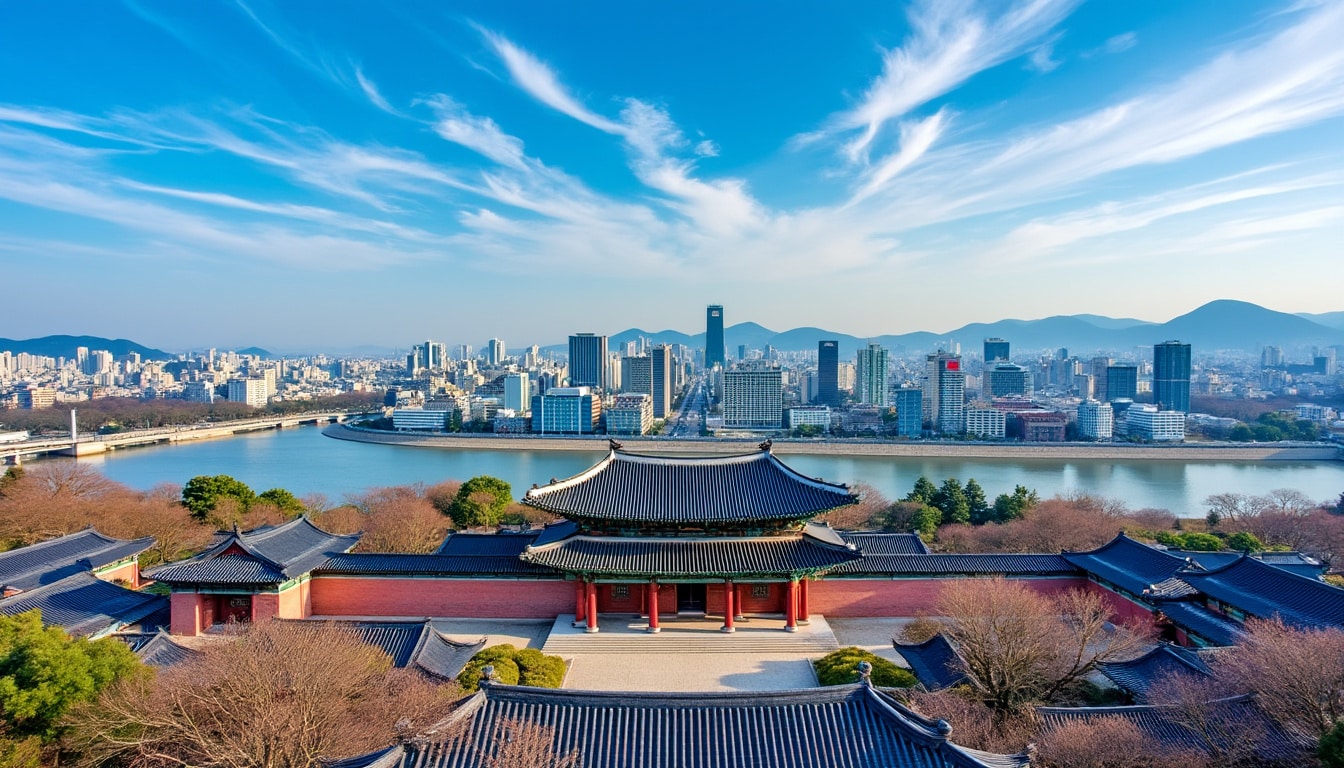
The Significance of Seoul’s Names
The multitude of names attributed to Seoul reveal various aspects of its heritage and identity. Each name carries unique political and cultural implications that have influenced the development of the city:
- 🥇 Hanseong: Reflecting Seoul’s strategic importance along the Han River.
- 🌅 Hanyang: A romantic depiction of Seoul’s geographical position.
- 🇯🇵 Gyeongseong: A testament to the colonial past and its impact on the city.
- 🌆 Seoul: Symbolizing a return to Korean roots and modern identity.
Understanding Seoul through its former names provides a deeper recognition of the city’s evolving identity against a backdrop of Korean history.
The Flag and Emblem of Seoul: Symbols of Unity and Vision
In addition to its rich nomenclature, Seoul’s flag and emblem represent the city’s vibrant identity and future aspirations. Introduced with modern design elements, the flag of Seoul features a pristine white background, symbolizing purity and peace, with the city’s official emblem prominently displayed at its core.
The emblem itself showcases the Korean syllable 서 (seoul) artfully crafted into the form of a mountain, the Sun, and the Hangang (River). Each component in this emblem holds a symbolic meaning:
| Element | Symbolic Meaning | Representation |
|---|---|---|
| 🏞️ Mountain | Environmental Respect | Green |
| 🌊 Hangang (River) | History & Vitality | Blue |
| ☀️ Sun | Future Vision | Central Element |
This emblem is a nod to past inspirations derived from artworks of renowned painters Jeong Seon and Kim Hong-do, which captured the beauty of Namsan Mountain and symbolized the liveliness of a dancing boy. Similarly, the modern emblem expresses Seoul’s dynamic energy and commitment to sustainability and cultural preservation.
Seoul’s emblem is more than just a visual identity; it underlines the city’s promise to create a harmonious balance between progress and tradition, nature and urban life—a philosophy that continues to shape the identity of Seoul today.
Seoul’s Influence on Global Culture and Economy
Beyond its emblematic representation, Seoul exerts a considerable influence on global culture and economy. The city’s dynamic blend of authenticity and modernity has made it a magnet for cultural exchanges and economic developments. At the forefront of this influence are key phenomena such as Korean pop culture, branded as K-Pop, and thriving industries led by Samsung, LG, and Hyundai.
Seoul’s cultural offerings are vast, including the iconic Seoul Fashion Week that attracts international attention, showcasing unique styles and colors of traditional Korean Hanbok alongside cutting-edge fashion. Additionally, renowned landmarks like Namsan Tower and Gyeongbokgung Palace blend historical context within a modern setting, attracting millions of visitors each year.
These cultural elements exist alongside Seoul’s growing reputation as a technological powerhouse, home to industry giants that set trends in technology and innovation on a global scale. Consequently, Seoul’s local culture, through institutions such as the Korea Tourism Organization and Seoul Metropolitan Government, is actively promoted internationally, highlighting Seoul as a dynamic place to live, work, and visit.
Well-Known Drivers of Seoul’s Global Identity:
- 🎵 K-Pop: Global sensation idol groups and music fueling interest in Korean culture.
- 👕 Seoul Fashion Week: Cutting-edge styles and traditional Hanbok grace the runways.
- 📱 Samsung & LG: Innovation giants shaping consumer electronics worldwide.
- 🚗 Hyundai: Redefining automotive technology and design.
- 🏰 Gyeongbokgung Palace: A historical landmark enriching Seoul’s cultural landscape.
Seoul’s comprehensive influence extends beyond culture to deeply impact economic dimensions, painting the city as an essential player on the world stage.
Understanding Seoul’s Identity Through Its Cultural Landmarks
Landmarks in Seoul not only provide windows into the past but also contribute significantly to the city’s contemporary identity. Sites like Gyeongbokgung Palace reflect the distinguished history and architecture that have endured through centuries, providing visitors with a glimpse into Korea’s royal heritage.
Meanwhile, modern developments such as Namsan Tower offer panoramic views of the cityscape, symbolically bridging the old with the new. Positioned as a hub of connectivity, this landmark encapsulates Seoul’s role as an international metropolis that harmonizes technological progress with cultural legacy.
The cultural impact of Seoul extends indoors as well, where culinary delights reflect the city’s hospitality and contemporary tastes. For those seeking an authentic Seoul dining experience, flavors ranging from traditional Korean dishes to innovative fusion cuisines can be savored across its vibrant food scene.
Highlights of Seoul’s Cultural Landmarks:
- 🕌 Gyeongbokgung Palace: A symbol of royal heritage and architectural beauty.
- 🌇 Namsan Tower: An icon of Seoul’s skyline offering breathtaking views.
- 🍱 Local Cuisine: A rich food culture featuring both traditional and modern flavors.
The delicate interweaving of history with modern innovations is a testament to the city’s ongoing journey towards cultural and technological excellence.
Seoul’s Future Through Its Symbols and Identity
The story of Seoul’s names, flags, and identity encapsulates the rich fabric of Korean history, charting a course from ancient kingdoms through colonial episodes to a revitalized, modern state. The embrace of symbols like the emblem blends the city’s proud heritage with its future aspirations, fostering a vision of a harmonious, sustainable city committed to progress.
As Seoul ventures forward, its role as a trendsetter in global culture and economy continues to expand. Supported by the dual pillars of tradition and innovation, the city maintains a dynamic identity that guides it into an era of prosperity—a vision celebrated by residents and visitors alike. The deliberate preservation of cultural landmarks, alongside economic innovation instilled by local giants, ensures Seoul remains a beacon of excellence.
For an immersive experience into Seoul’s unique cultural and modern dynamics, the Korea Tourism Organization provides insightful resources for all visitors keen on exploring Seoul tourist tips.
Whether viewed from its historical landmarks or future technological strides, Seoul’s essence is encapsulated in the synergy of its names, emblem, and identity—a reflection of a city poised for a forward-thinking future.
Frequently Asked Questions About Seoul’s Names and Identity
- Why did Seoul have so many different names throughout history? Seoul’s various names reflect its historical evolution and the political changes it underwent, each holding its own cultural significance.
- What does the modern name ‘Seoul’ mean? The term ‘Seoul’ is an indigenous Korean word meaning “capital” or “metropolis,” closely aligned with the city’s central role in the nation.
- How is the city’s emblem connected to its identity? The emblem combines elements that represent Seoul’s environmental stewardship, historical depth, and visionary future, forming the core of its modern identity.
- What role do cultural landmarks play in shaping Seoul’s identity? Cultural landmarks enrich Seoul’s historical narrative while tethering modern progress to a vivid cultural past, essential in defining the city’s dynamic identity.
- How do music and technology define Seoul globally? Seoul’s international influence radiates through K-Pop’s cultural expansion and industry innovations led by prominent technology companies.
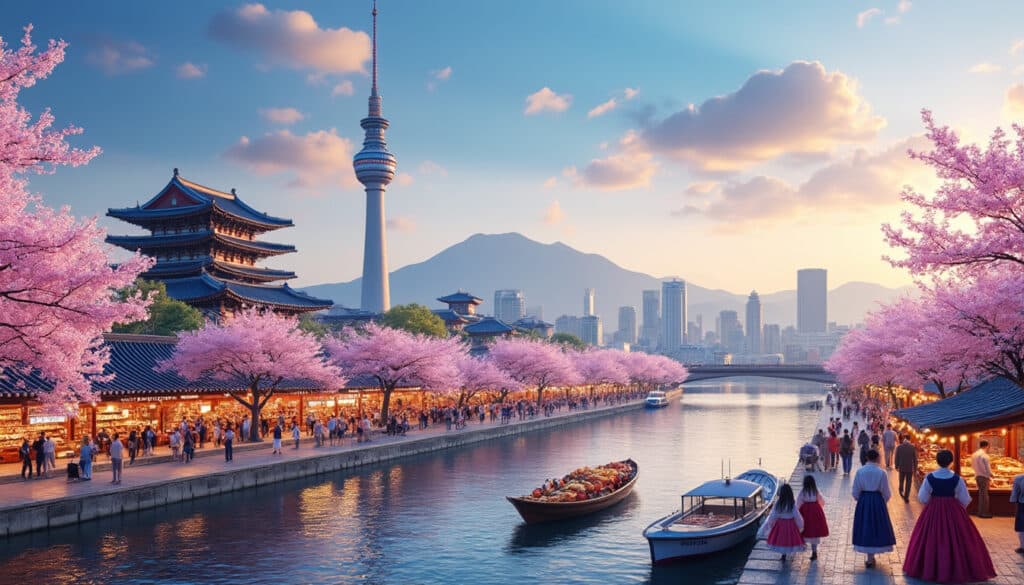
Fun Facts & Curiosities About Seoul
Seoul, a dazzling fusion of modernity and tradition, captivates every visitor with its vibrant blend of history, culture, and innovation. From being a technological metropolis to a cultural capital, the city offers a myriad of interesting facets waiting to be…
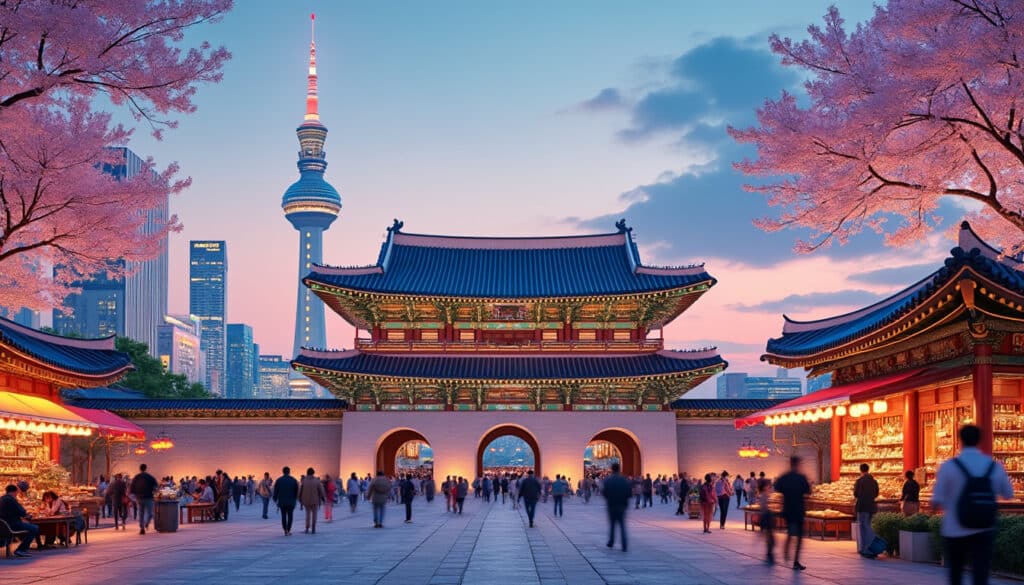
Architecture and urban features of Seoul
Seoul, South Korea’s vibrant capital, stands as a dynamic fusion of traditional culture and modern innovation. The city’s architectural wonders are a testament to its rich history and cutting-edge design principles, weaving a tapestry where ancient palaces coexist with towering…
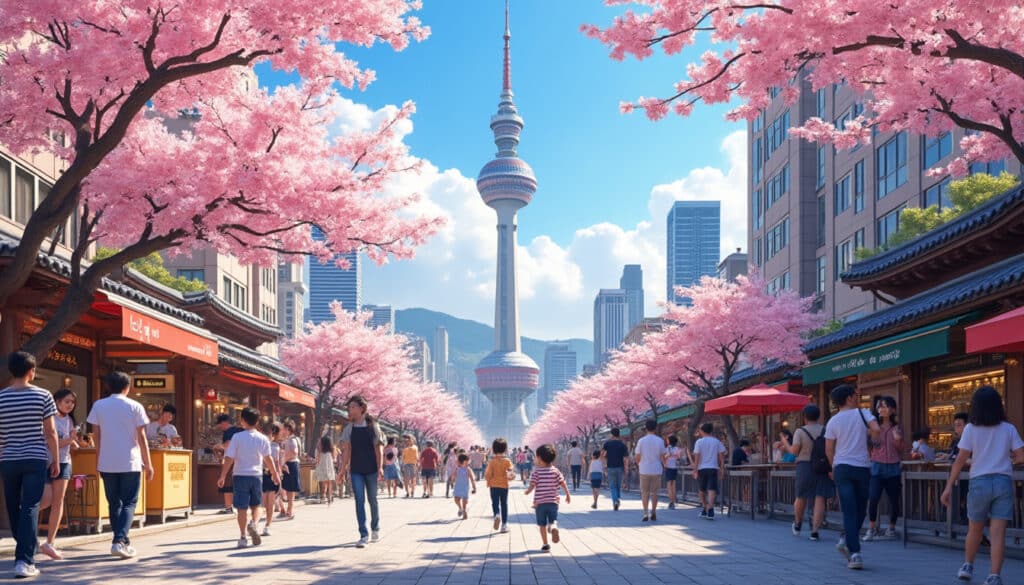
Seoul is a bustling metropolis where the ancient and modern coexist harmoniously. From its rich history rooted in time-honored traditions to its vibrant nightlife and technological advancements, this city is a haven for both tourists and expats. Stepping into Seoul…

Demographics and geography of Seoul
Seoul, the vibrant capital of South Korea, stands as a testament to the country’s rapid development and cultural evolution. Nestled along the banks of the Han River in the northwestern corridor of the Penninsula, Seoul represents a harmonious blend of…
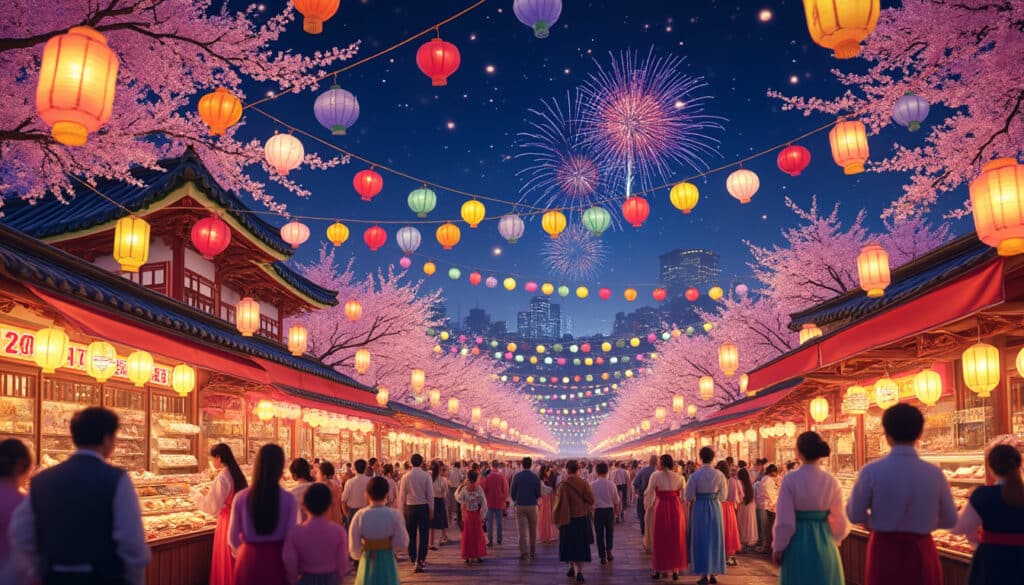
Holidays and celebrations in Seoul
Seoul, the heart of South Korea, is where traditions meet modernity, creating a unique tapestry of cultural and contemporary celebrations. The city, known for its vibrant lifestyle and rich history, transforms into a festive wonderland during public holidays. From historical…
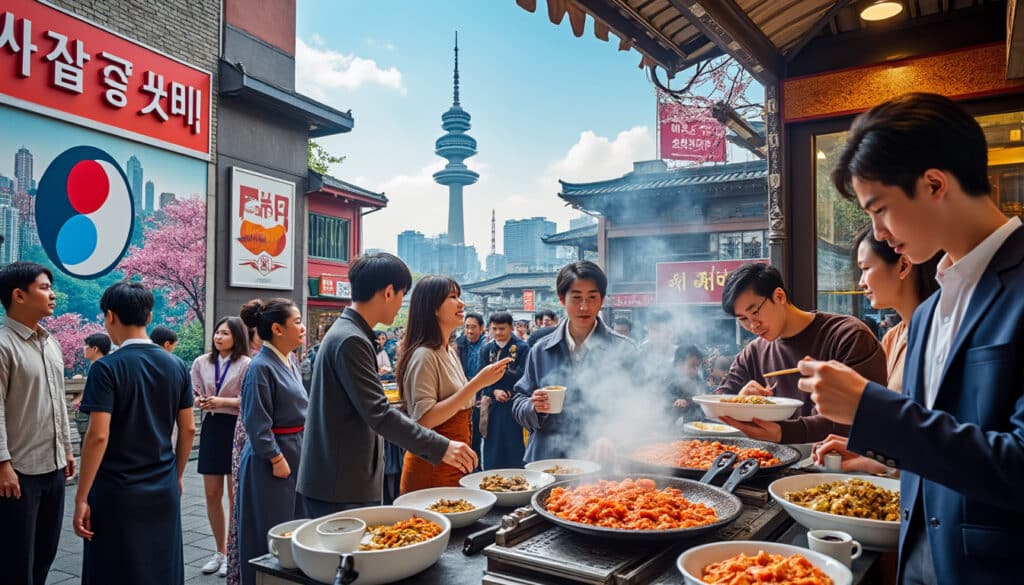
Language and spelling of Seoul
Seoul, the bustling capital city of South Korea, is not just a hub of rapid technological advancements and modern culture, but also a treasure trove of linguistic history and evolution. The city’s language and spelling conventions offer a window into…
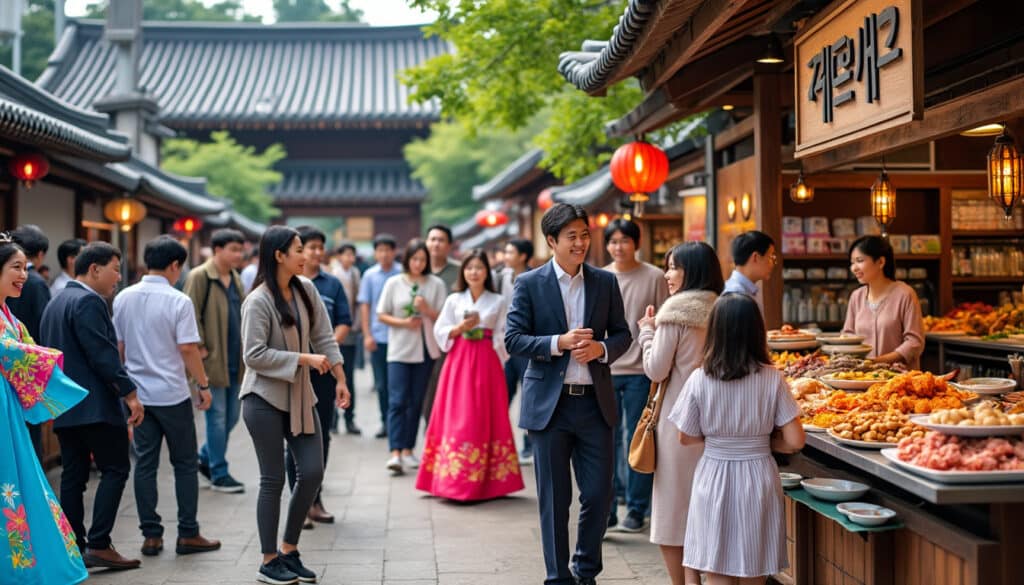
Local tips for tourists in Seoul
Seoul, the vibrant capital of South Korea, offers a fusion of ultra-modern skyscrapers and ancient palaces, bustling markets, and serene temples. However, while embarking on a journey to this dynamic metropolis, tourists often miss the oddly charming, unconventional spots that…
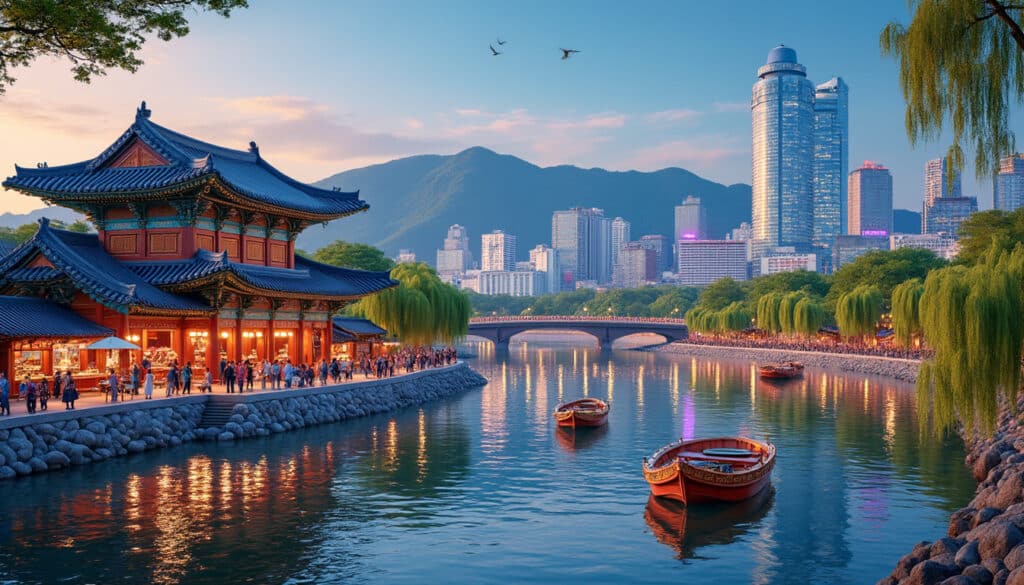
Reputation and identity of Seoul
Seoul, the pulsating heart of South Korea, is a city that gracefully bridges the gap between the past and the future. Known for its towering skyscrapers, neon-lit streets, and a burgeoning tech industry alongside historic palaces, tranquil temples, and bustling…
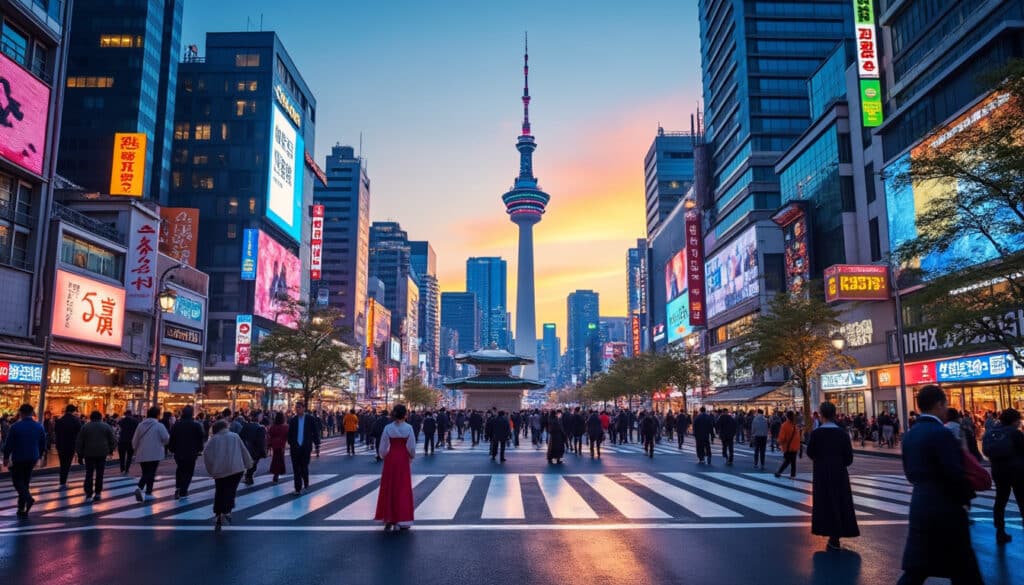
Seoul, a sprawling city that seldom sleeps, is a vibrant blend of tradition and modernity, pulsing with energy around the clock. Understanding time in this bustling metropolis is crucial for both residents and visitors, not only for practical planning but…
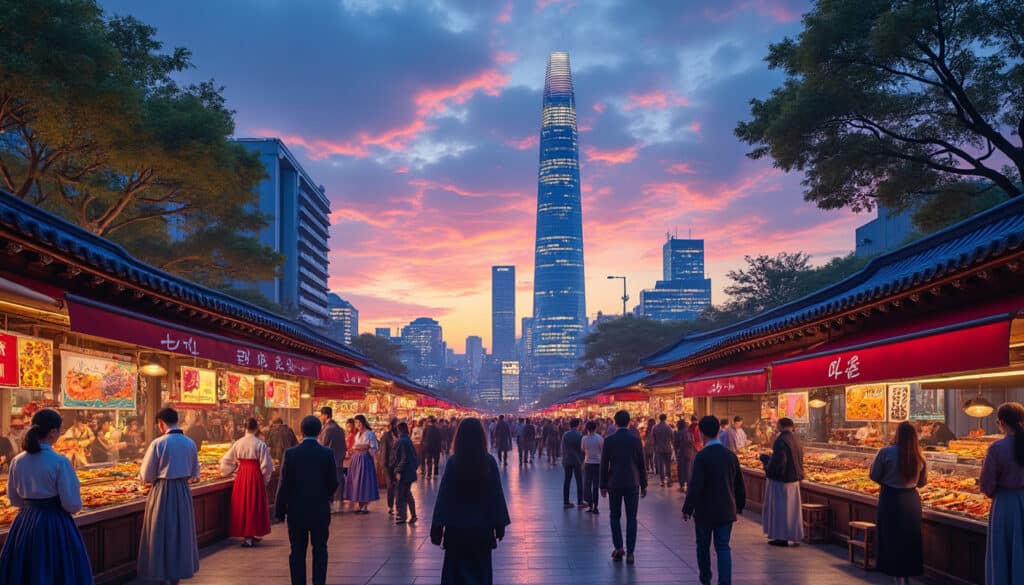
Unusual facts and social issues in Seoul
Seoul, a dazzling tapestry of ancient history and contemporary vibrance, offers explorers an eclectic mix of the unexpected and the familiar. As a hub of innovation with deep cultural roots, Seoul embodies a fascinating blend of contrasts that draw millions…
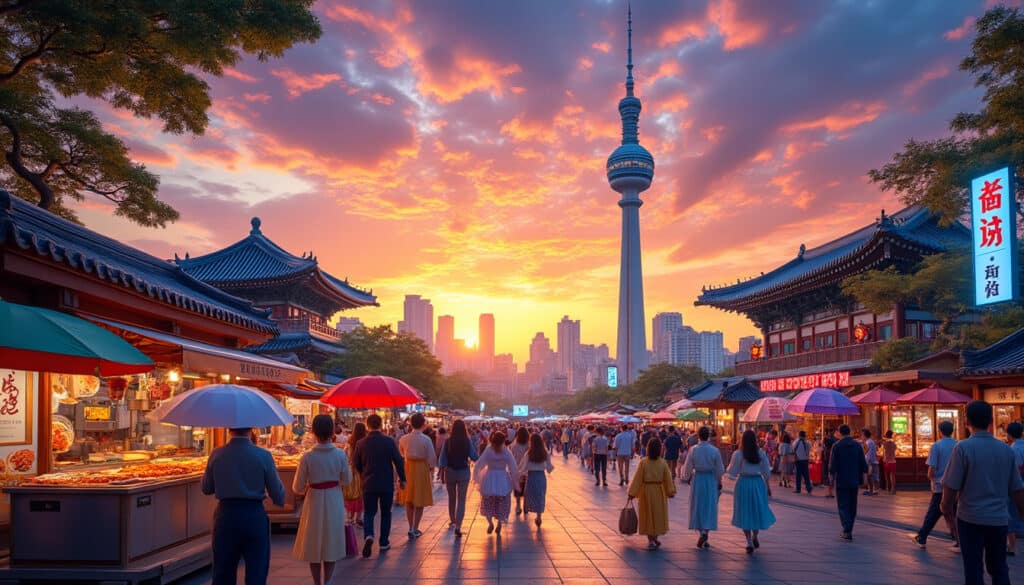
What does Seoul look, smell, feel like?
Seoul, South Korea’s sprawling metropolis, is a city that engages all the senses. As you navigate its bustling streets, you’re enveloped by a panorama of contrasting elements: sleek skyscrapers shoot up next to ancient palaces, neon-lit alleyways buzz with life…

